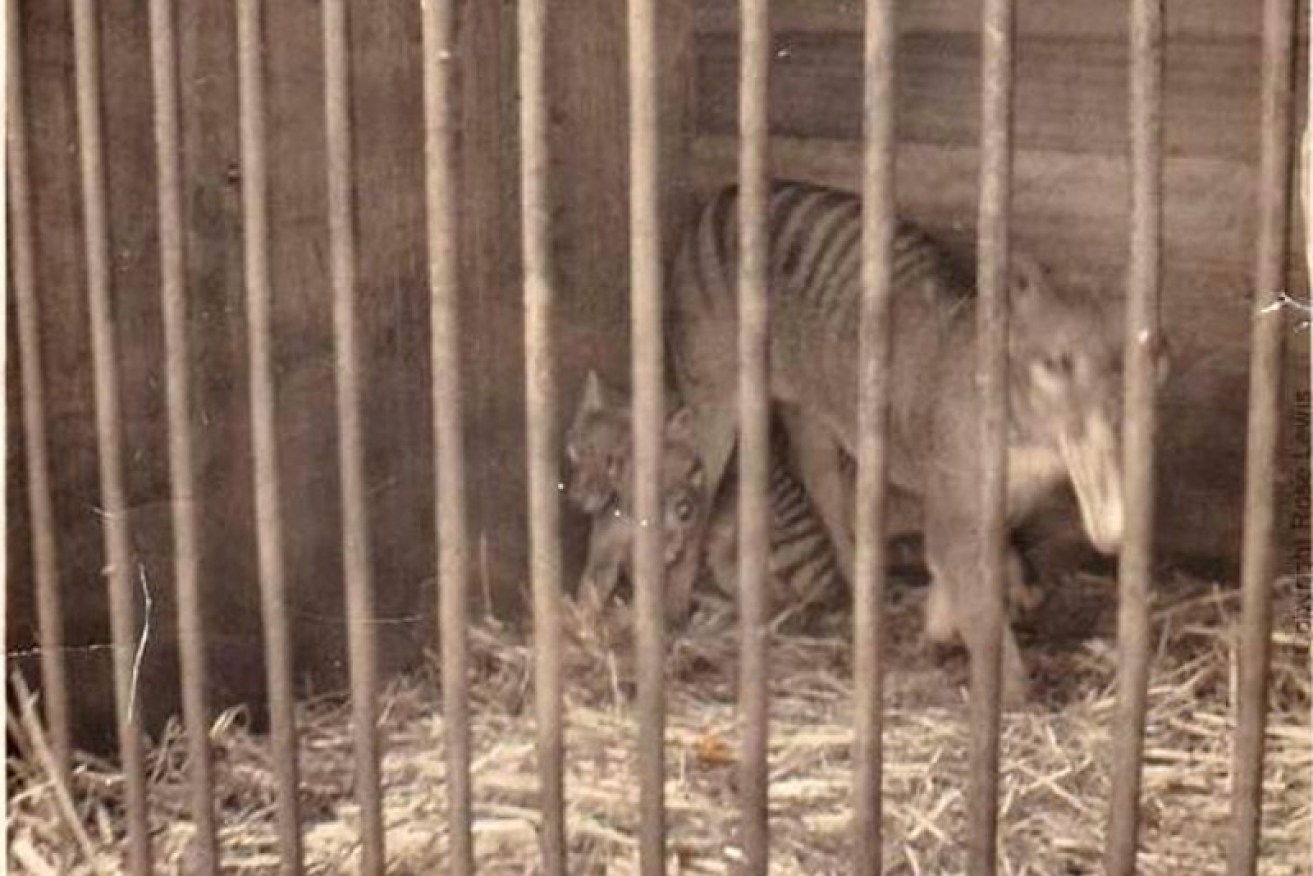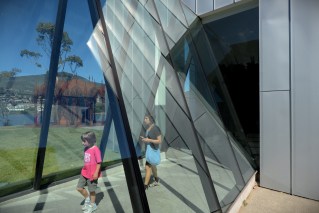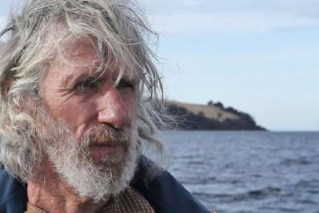Discovery of Tasmanian tiger photo renews interest in thylacine

Rose Lewis's photo of the thylacine. Photo: Rose Lewis/ABC
It is not often a new Tasmanian tiger artefact comes to light, let alone two from different sources.
While the chances that one of the tigers is alive is one in 1.6 trillion, a find of thylacine hair and a previously unseen photograph have tiger hunters excited.
Rose Lewis did not know an old photograph from her grandmother’s collection would make such an impact when made public.
“I’ve had it all my life. It’s my grandmother’s photo,” she told ABC Radio Hobart.
“The other night I was on a site for vintage things and I thought, ‘Oh, I’m going to pop this up there’.”
The photograph shows a mother thylacine with her mouth open in a protective stance with three tiny pups hiding behind her.
The tigers in the photo had been snared by Walter Mullins on the west coast of Tasmania in the early 1920s.
Mr Mullins was a bushman and trapper who was looking for kangaroos when he caught the mother thylacine with three pups in her pouch.
He took the family of Tasmanian tigers travelling, putting them on show at country fairs before selling them to the Hobart zoo in the mid-1920s.
“My nan would talk about it but my dad never would,” Ms Lewis said of her family’s history with Tasmanian tigers.
“Trappers and bushmen back then who snared animals were not exactly the best of society, if you like, these tough old bushmen.”
Chris Rehberg is an amateur naturalist based in Sydney who developed a keen interest in the history of Tasmanian tigers through his passion for photography.
“I don’t really recall any new photographs showing up in the 10 or 12 years I’ve been looking at them, so it really is quite rare,” he told ABC Radio Hobart.
Mr Rehberg said the photograph was a significant addition to the history and story of Tasmanian tigers.
“I would not be surprised if there are other families, other people who have some sort of family history from say before 1950,” he said.
“We have such little historical information to put together a history of the species and all the things that went in the last 30 to 40 years they were alive.”
Mr Rehberg has started a crowdfunding appeal to help him document a sample of thylacine hair found tucked away in a cabinet of microscopes and microscope materials.
“The hair came in a tiny little envelope that was hand written with the name of the species, and you can kind of tell by the handwriting that it’s quite a vintage piece,” he said.
“Presumably it was intended to be prepared for microscope slides but it never happened.”
While there are hair samples from thylacines held in museums and universities, the only two papers publicly available have poor quality black and white images.
“What I’m hoping to do is get a project off the ground, put [the hair] under the microscope and … get some high quality photographs, they’re called photomicrographs,” Mr Rehberg said.
“You can look at things like there’s a scale pattern on the surface of the hair, you can look at where the pigment is located on the hair.”
Mr Rehberg has set up a page on his website called Where Light Meets Dark for people to share their stories and information on Tasmanian tigers to build a public resource.
-ABC







